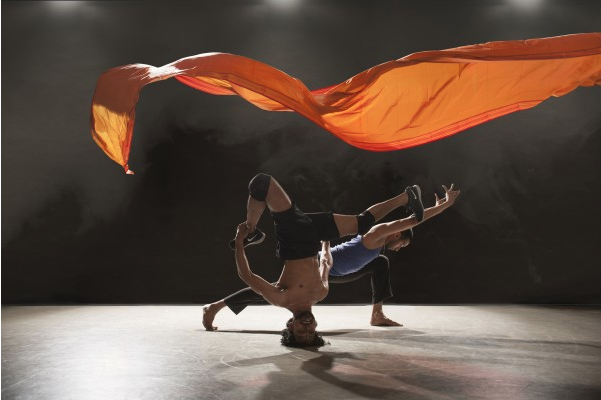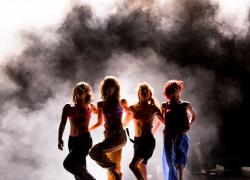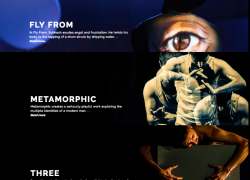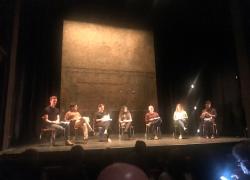Material Men & Strange Blooms
Material Men & Strange Blooms, Shobana Jeyasingh Dance, Purcell Room, Southbank Centre,16th & 17th September 2015 – Reviewed by the Pulse Dance Audience Club
In Strange Blooms (2013), changing projected microscope images of plant cells and an early time-lapse photograph of a flower opening provided a backdrop for the dancers as we moved through the sections (Sunflower Saplings, Branching, Cellular Instabilities). The quote by Darwin and titling of each ‘act’ made the piece feel a little like a biology lesson but an extremely cool one. The work gave us an insight into the truly organised yet chaotic nature of the internal processes of living organisms. It was captivating to see how those infinite interactions between cells, molecules and particles were translated into extremely intricate dance. The high energy and clarity of movement accurately depicted the precision required for survival.
A number of sequences were sprinkled with the hallmarks of Jeyasingh’s choreography, for example the push-pull partner work. The striking use of jagged, angular, cutting movements and dynamics as a mode was maintained for extended periods and this sometimes became hard to take in, a little overwhelming. Some would have like more memorable moments such as the intimate final duet that exuded sensuality and sexuality, going deep into the theme. The blooming flower sequence featuring the beautifully held leg extensions was wonderful too but could have been drawn out for longer – we generally felt the more subtle moments of the piece were cut too short. The lighting, by Guy Hoare, was spectacular, especially in the frenetic opening sequence and also when the dancers’ bodies created block silhouettes against an indigo backdrop, reminiscent of the chromosomes aligning during cell division.
The new work, Material Men, explored the separate journeys and encounter of two dancers, inheritors of the mass migrations of colonial history: Sooraj Subramaniam (India/Malaysia/Australia/Europe) and Shailesh Bahoran (India/Surinam/Europe). Some found the opening words helpful, and would have liked more as the piece progressed to help with the 'reading' of the journeys of the two men and their contrasting trajectories. Others felt they were unnecessary and were disjointed from the aesthetics and cultural portrayal in the rest of the piece.
We loved the saffron sari. The way it bound the two men at the start suggested bonded labour and textile industries. They were also bound together by their experience, behind the bars (or fence or suggestion of bamboo poles or sugar cane – picking up on Shailesh’s story), and had to find freedom from it; but if the sari also symbolised their heritage, that freedom also could mean loss. The bars or fence conveyed a sense of the past and present as the dancers emerged from behind them but danced in and out of them – history cannot altogether be escaped. This was reflected in the music too in the sense that Indian dance traditionally has the musicians on the stage, but not a string quartet (The Smith Quartet, music composed by Elena Kats-Chernin). The music (with layers of electronic music from Leafcutter John) was loved but some felt that the tones used in certain sequences could have been warmer.
There was a powerful physical contrast between the two dancers as well as their two styles, bharatanatyam and hip hop. A few of us felt that the opening ‘struggle’ – a gripping sequence of extraordinary movement with the sari – was actually rather playful and was presented to the audience in that way too since the dancers seemed to be co-operating. Sooraj was flawless but very composed for much of the piece, his dancing very formalised. Perhaps Sooraj’s colder, almost snooty character portrayed an experience of a more refined version of Indian culture through his dance training and upbringing, something which Shailesh had missed in his. Shailesh seemed to borrow or mimic elements from Sooraj’s movement vocabulary but this was not reciprocated – we wondered why. Shailesh’s performance was very strong, quirky and at times humorous, but he also seemed to express much pain and an agonised history through his dance (so that it was a pleasant surprise to see his big smile when they took their bows). At the end, the cradling sequence, although delicate, was sudden – it lacked a build-up. Overall, we felt that the stories of the dancers/characters need to be explored further to bring out more intention that would enrich the piece and the relationship between these two fantastic performers.



















